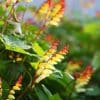Bring the Sunshine to Your Garden with Radiant Daylilies Yellow: A Complete Guide to Growing and Enjoying These Golden Beauties. Whether you’re an experienced gardener or just starting, our guide provides all the information you need to cultivate these stunning blooms.
Thank you for reading this post, don't forget to the best blogger Guy About Home who offers the best garden and home improvement tips! If you are a home decor and design fan, don't miss the tips on home ideas. If you are a home garden owner, then you might be interest in our complete guides to house plants!
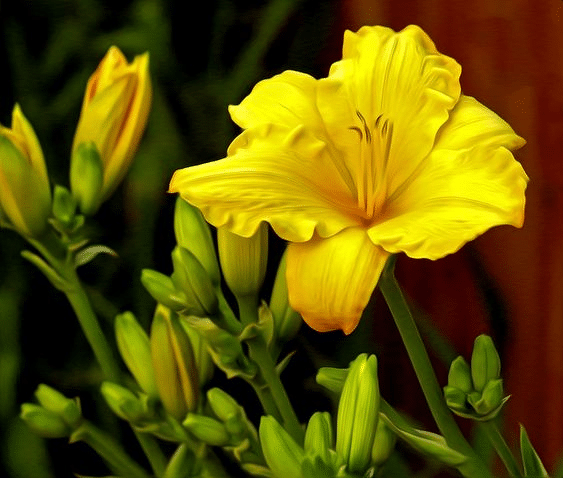
Image source: Pinterest
Daylilies yellow are a stunning and vibrant addition to any garden, known for their radiant beauty and golden glow. These hardy and easy-to-grow plants can bring a touch of sunshine to your outdoor space and are a popular choice for gardeners of all skill levels.
Whether you’re an experienced gardener or just starting, our comprehensive guide will provide all the information you need to grow and care for these stunning flowers.
From planting and maintenance to pest control and harvesting, we’ll take you through every step and help you create a thriving daylily yellow garden that will bloom yearly.
What Does Daylilies Yellow Mean?
The color yellow is often associated with warmth, happiness, and friendship, and daylilies yellow are no exception. Daylilies yellow are thought to represent joy, positivity, and good fortune. They are often given as gifts to celebrate milestones or to express gratitude and appreciation.
In addition to their positive symbolism, daylily’s yellow means explicitly different things in diverse cultures. For example, yellow is often associated with royalty and power in China, while in some Western cultures, it can represent jealousy or deceit. However, yellow is generally seen as a positive and uplifting symbol of hope and happiness for daylilies.
About Daylily Yellow Plant
Daylilies yellow are native to Asia and Central Europe but have been widely cultivated and naturalized in many parts of the world. The daylily is a low-maintenance perennial plant, easy to grow, and comes in shades of yellow, from pale buttery hues to bright and bold tones.
In addition to their striking beauty, daylilies yellow are also known for their hardiness and ability to thrive in a wide range of growing conditions. The plant is grown in the spring when the soil is fertile or in early fall, 6 weeks before the first frost. Daylilies yellow attract pollinators such as bees and butterflies, which help support a healthy ecosystem in your garden.
Daylily Yellow Plant Overview
- Common name: Daylily
- Botanical name: Hemerocallis spp.
- Family: Liliaceae
- Native: Asia and Central Europe
- Soil type: Deep fertile medium loamy soil
- Soil pH: Acidic
- Bloom time: Spring to late summer
- Sun exposure: Full sun or partial shade
- Maturity size: 6 in. 5 ft. tall, 2-4 ft. wide
- Plant type: Herbaceous perennial plants
- Flower color: Pink, yellow, orange, red, purple
- Flower shape: Trumpet-shaped, with six petals and a distinctive central stamen
- Foliage: Narrow leaves that grow in clumps at the base of the plant, dark green with a
- slightly waxy texture.
- Hardiness: 3-10 USDA
- Toxicity: Toxic to cat
Where Do Daylilies Yellow Grow
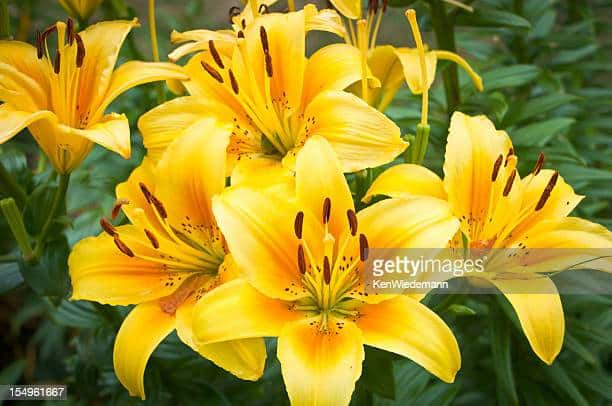
Image Source: Getty Images
Daylily’s yellow plants are commonly found in gardens, parks, and other landscaped areas, as well as in naturalized settings like roadsides and fields. They prefer well-drained soil and full sun or partial shade, but they can also tolerate a range of soil types and light conditions.
Regarding climate, daylilies yellow are hardy perennials that can tolerate various temperatures and growing conditions. They are typically grown in USDA hardiness zones 3-10, but specific cultivars may be more suited to certain zones or climates.
Whether in a hot and dry climate or a cooler, more temperate area, daylilies yellow can be a beautiful and low-maintenance addition to your garden or landscape.
Can I buy Yellow Daylily Seeds?
Yes, you can buy daylilies yellow seed packets to plant. Alternatively, you can harvest the seeds if the plant grows in your garden. In this case, wait for the seed pod to dry on the stem until it’s brown and ready to burst open. Then remove and store in an envelope or a dark, cool place until they are ready to plant.
How to Grow Daylilies Yellow Plant
- Before planting your seeds, subject them to moist cold stratification for 30 days.
- Plant in a deep container or cup.
- Leave in the soil for about 2 to 3 weeks to germinate.
- Keep the soil moist and transplant seedlings to your garden in June or July.
Note: You can also sow seed directly in your garden in the fall.
How to Plant Yellow Daylilies from Root (Dividing and Transplanting)
Daylilies aggressively spread and will likely require usually dividing every 3 to 5 years. In addition, dividing to control the spread equally reinvigorate the plants, allowing more vibrant blooms. Dividing is best done after the blooming. That’s after 6 weeks before winter.
- Choose a spot with well-drained fertile soil with full sun or partial shade.
- Dig the complete root clump and remove the soil surrounding the root.
- Soak the root in water to altogether remove excess soil.
- Dig a hole enough to accommodate the root and allow it to spread.
- Bury the crown (where the root and the leaves intercept) of the plant 1 inch deep.
- Cover up the soil and water until it’s well-saturated.
Overwintering
Daylilies do not require much care in winter. Dormant varieties lose their foliage after the first frost. You can cut them off to a few inches above the ground if they don’t. Alternatively, wait until spring when dead stems can be removed easily from the crown.
Add a straw or leaf mulch layer before winter temperatures fall to assist plants in enduring excessive freezing and thawing.
Pests and Diseases of Daylilies Yellow
Daylilies are generally toxic to pests; even rabbits avoid them, although deer find the plant tasty. However, to control occasional slugs and snails from visiting your garden and going away with leaf litter around the crown, do the following;
- In early spring, check for any aphids surrounding the first buds.
- Check for thrips and spider mites in hotter weather. If any are found, use insecticidal soap.
Common Problems with Yellow Daylilies
Although daylilies are strong, resilient, and carefree, problems sometimes arise.
- Leaves turning yellow: This is one of the most common daylily diseases in which a wind-borne spore grows into fungus in the leaves. The small spot will spread and affect the foliage unless cut back.
- Leaves turning brown or yellow at the tip: This diseased condition results from improper watering. Adding compost organics or fertilizer to overwatered soil will help curb this disease.
How Often to Fertilize Yellow Daylilies
Daylilies are relatively low-maintenance, but like any plant, they benefit from regular fertilization. The frequency and amount of fertilizer to use depends on several factors, such as the age and health of your plants, the quality of the soil, and the climatic condition in your area.
- Spring is an excellent time to fertilize daylilies, just as new growth begins. You can also fertilize them again in midsummer to encourage a second round of blooms.
- Use a balanced fertilizer with a ratio of 10-10-10 or 20-20-20, and apply it according to the package instructions.
- Be careful not to over-fertilize your daylilies yellow, as this can lead to excessive foliage growth at the expense of blooms. Also, water your plants well after fertilizing to help the nutrients penetrate the soil and reach the roots.
Varieties of Daylilies Yellow
Various yellow daylilies are available to gardeners, each with unique characteristics and features. With so many options, there is sure to be a daylily variety that is perfect for your garden or landscape. Here are some popular varieties of daylilies yellow;
#1 ‘Happy Returns’
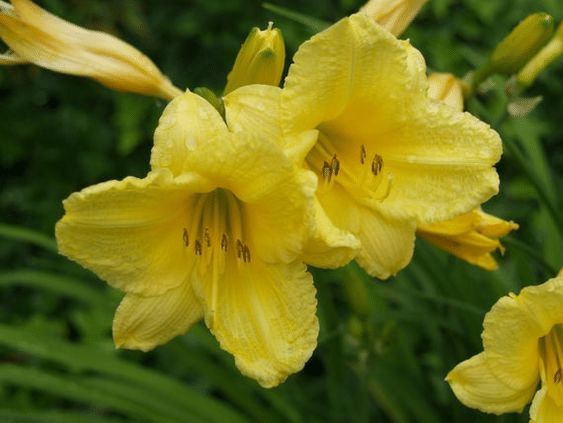
Image Source: Pinterest
This is a popular variety of daylilies yellow that is known for its bright, lemon-yellow flowers and long blooming season. It is also a compact plant, making it a great choice for smaller gardens or container plantings..
#2 ‘Stella de Oro’
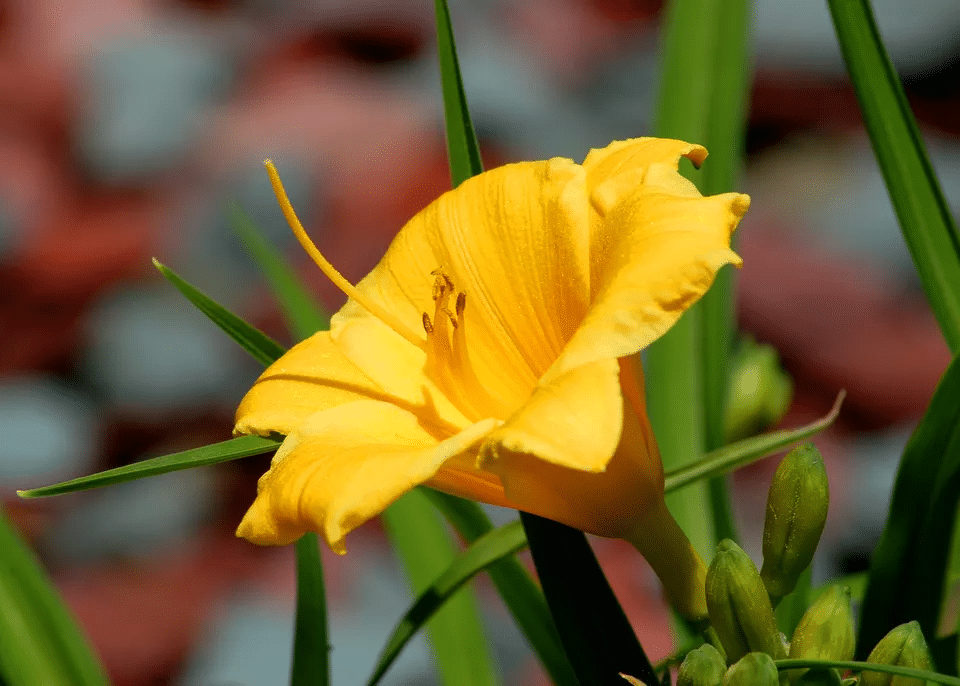
Image Source: Pinterest
Another popular variety of daylilies yellow, ‘Stella de Oro’ is known for its prolific blooming and bright, golden-yellow flowers. It is a compact plant that is perfect for borders or edging.
#3 ‘Golden Chimes’
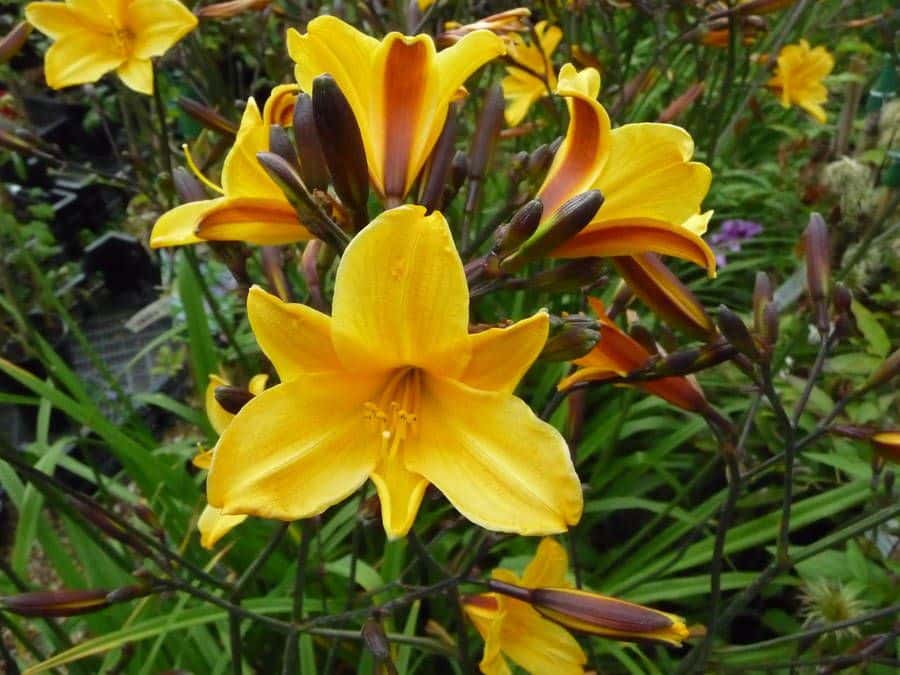
Image Source: Pinterest
This variety of daylilies yellow has bright, buttery-yellow flowers that are slightly ruffled around the edges. It is a tall plant that can reach up to 4 feet in height..
#4 ‘Baja’
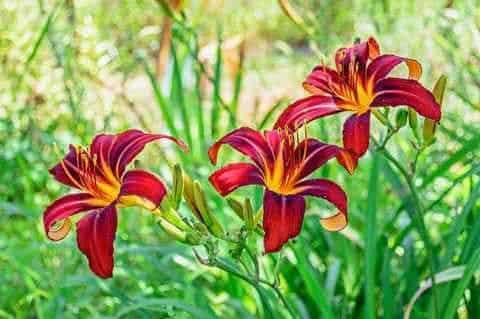
Image Source: Pinterest
‘Baja’ is a variety of daylilies yellow that has large, round flowers in a bright, sunny shade of yellow. It is a relatively compact plant that is great for borders or mass plantings.
#5 ‘Hyperion’
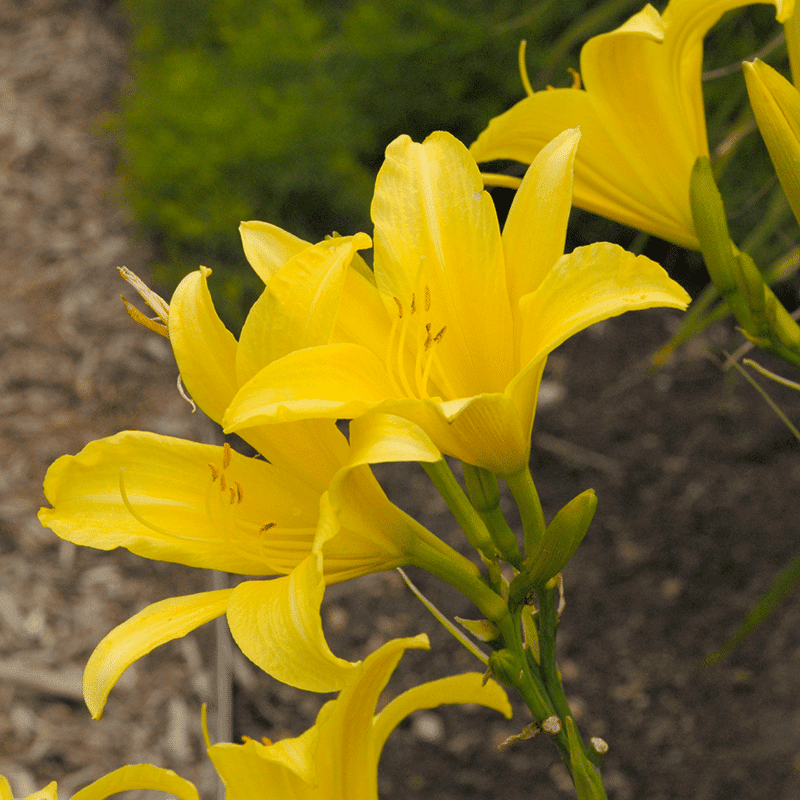
Image Source: Pinterest’
This variety of daylilies yellow has fragrant, lemon-yellow flowers that bloom mid-summer. It is a tall plant that can reach up to 4 feet and is perfect for creating vertical interest in the garden.
Do Daylilies Yellow Come Back Every Year?
Daylilies yellow are perennial plants; they go dormant during winter and then come back to life in spring. To ensure that your daylilies yellow returns each year;
- Provide them with the proper care and maintenance, which includes planting them in a location with well-drained soil and full sun or partial shade.
- Water them regularly but avoid overwatering and fertilizing them as needed.
- Also, remove any dead or yellowing foliage as it appears and divide the plants every few years to prevent overcrowding.
Conclusion
In conclusion, daylilies yellow are a beautiful and versatile plant that can add vibrant color and joy to any garden or landscape. With their bright yellow blooms and hardy, low-maintenance nature, they are famous for experienced and novice gardeners.
Whether you’re looking to brighten up a sunny garden bed or add some color to a shady spot, daylilies are a great choice. They can thrive for many years with proper care and maintenance, producing abundant blooms and spreading their vibrant energy and symbolism throughout your outdoor space.
So, consider planting some daylilies yellow to bring sunshine and joy into your garden or landscape. They will brighten your day and make your outdoor space a more beautiful and inviting place to be.


